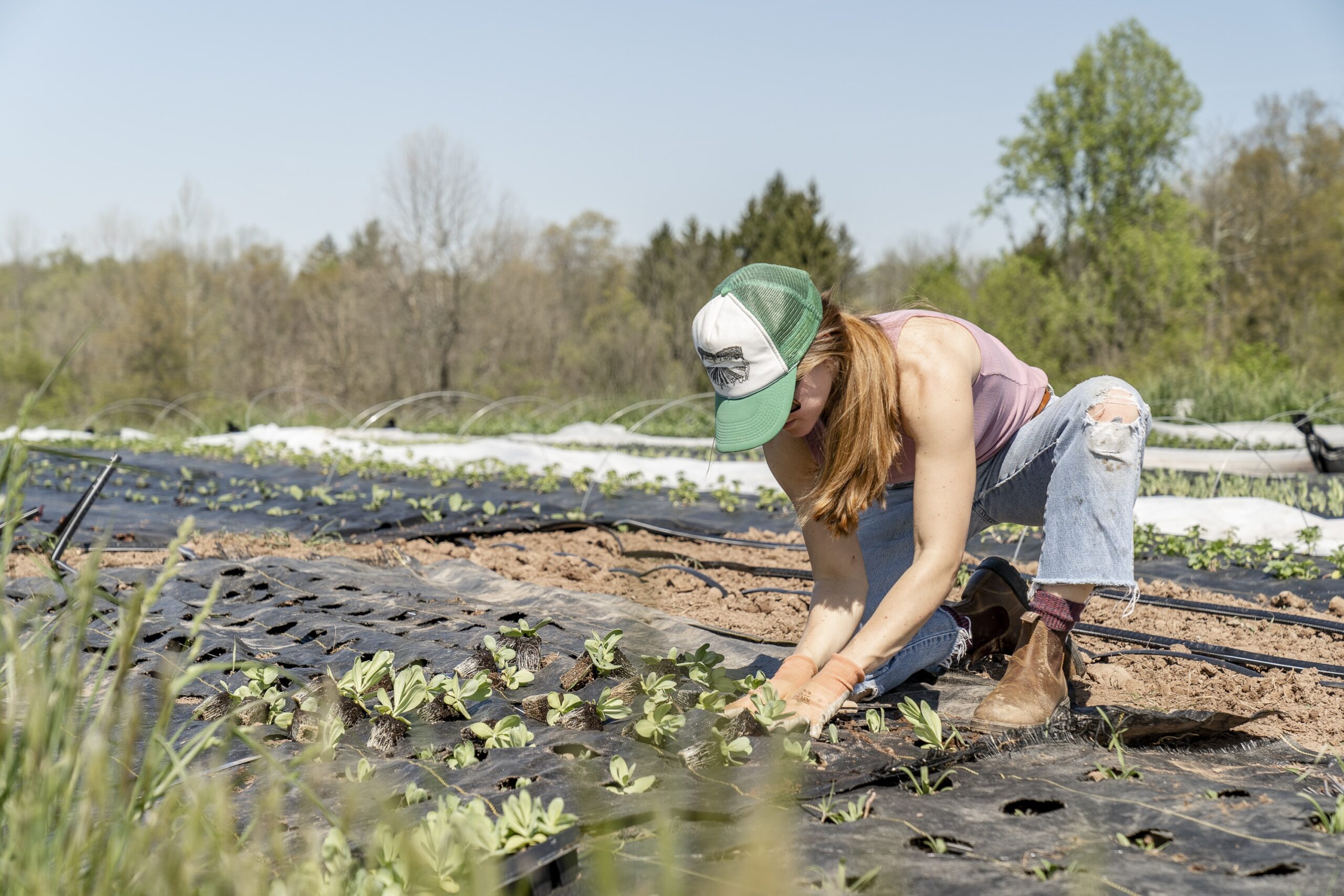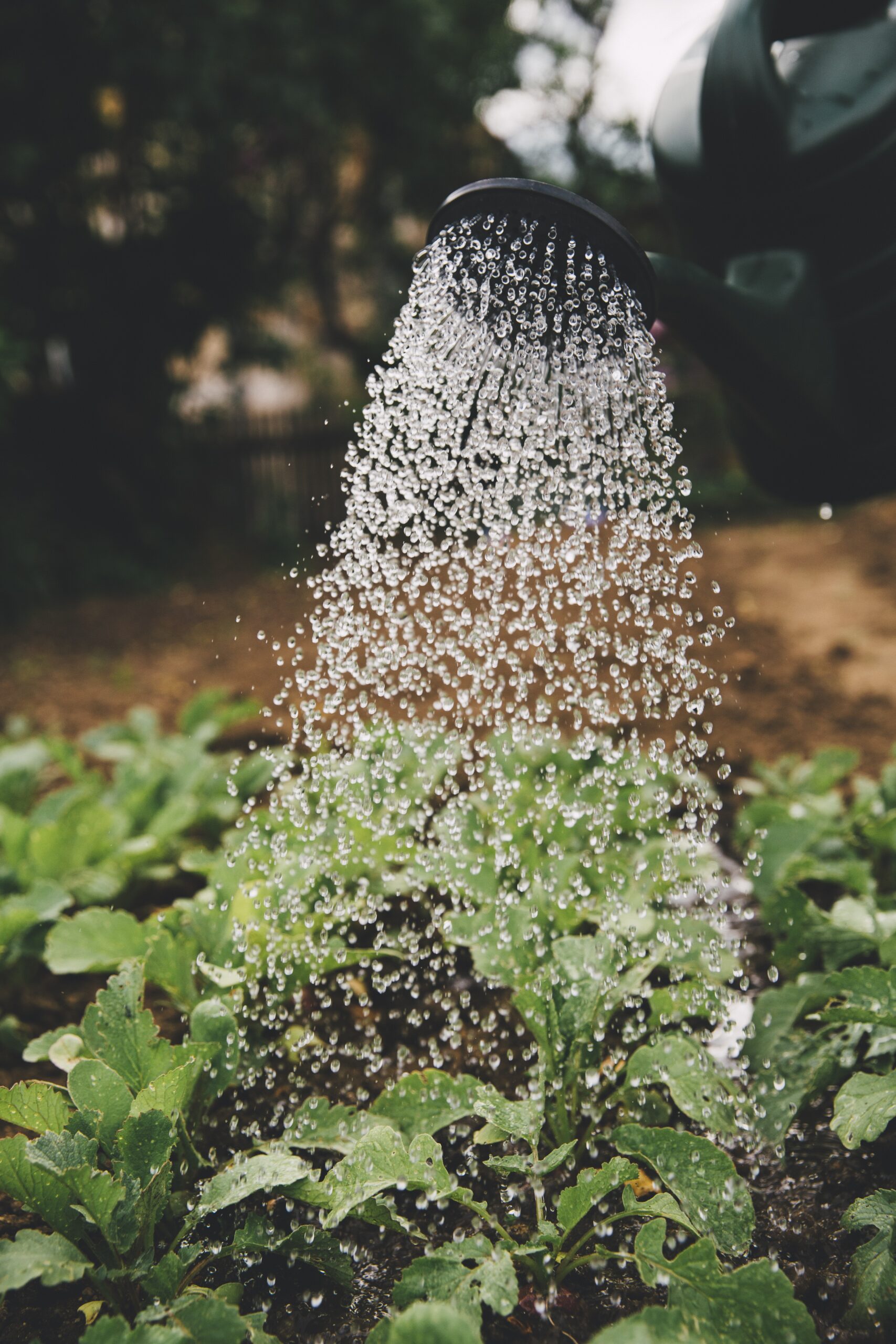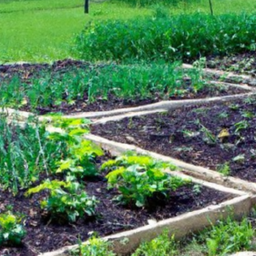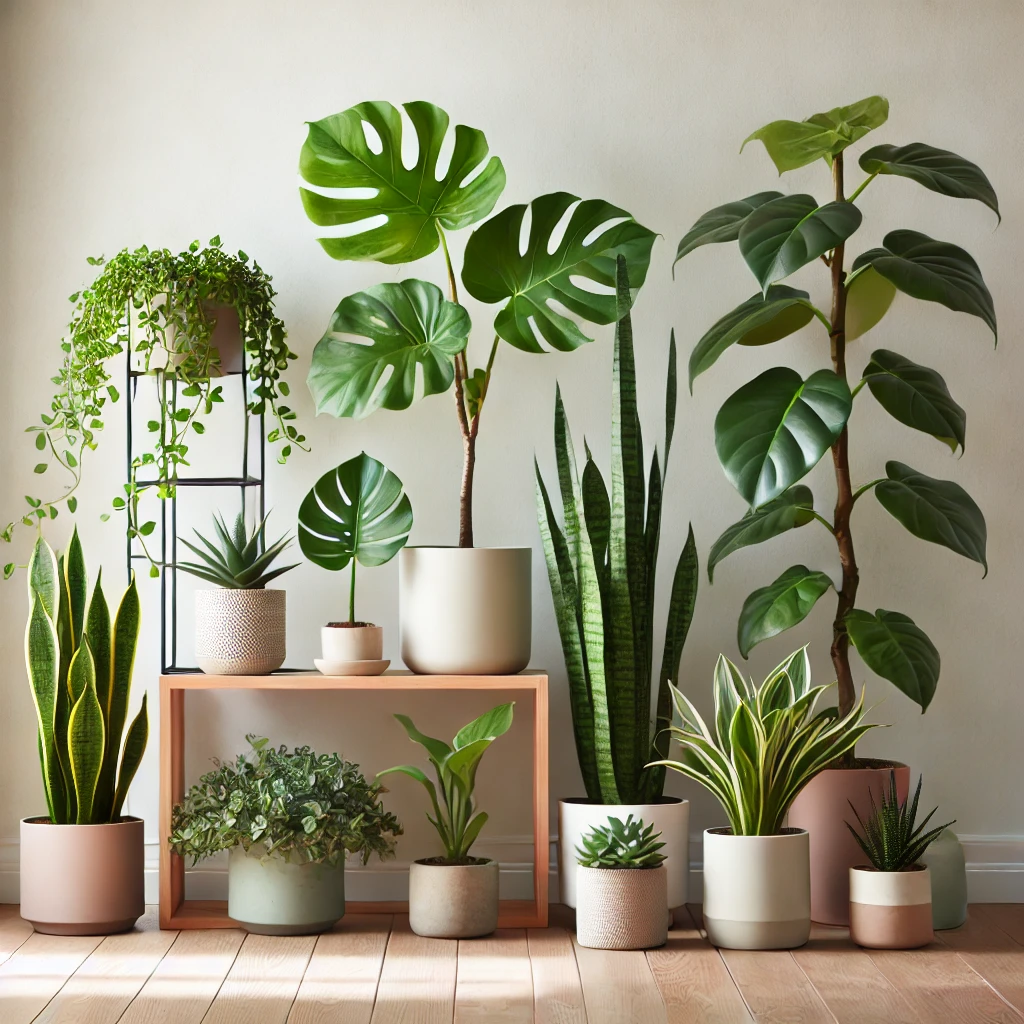You’re about to discover some valuable planting tips that will help you create a stunning garden in no time. Whether you’re a novice gardener or have a green thumb, these tips will equip you with the knowledge and tricks you need to successfully grow plants and flowers. From choosing the right location to maintaining proper watering and fertilization, these planting tips will allow you to create a flourishing oasis that will be the envy of your neighbors. So grab your gardening tools and get ready to embark on a journey of creating a vibrant and beautiful outdoor space like never before.
Choosing the Right Plant
Consider the Climate
When choosing plants for your garden, it is important to consider the climate in your area. Different plants have different temperature and humidity requirements, and planting something that is not suited for your climate could result in its failure to thrive. Research the hardiness zones for your region and choose plants that are known to be well-suited for those zones. Additionally, consider whether your area experiences extreme heat or cold, and choose plants that can tolerate those conditions.
Assess Your Soil Type
Another crucial factor to consider when choosing plants is your soil type. Different plants have different soil preferences, whether it be sandy, loamy, or clay soil. Understanding your soil type will allow you to choose plants that will grow optimally in your garden. You can easily assess your soil type by performing a simple soil test using a soil testing kit. Once you know your soil type, you can select plants that are known to thrive in similar conditions.
Choose the Right Sunlight Conditions
Sunlight is an essential requirement for plant growth. Before selecting plants for your garden, assess the sunlight conditions in the area where you intend to plant. Some plants require full sun, meaning they need at least six to eight hours of direct sunlight daily. Others may thrive in partial shade or full shade. Understanding the sunlight conditions in your garden will help you choose the right plants that will be able to receive the amount of sunlight they need to grow and flourish.
Research Plant Care Requirements
Different plants have varying care requirements, and it is crucial to research and understand these requirements before selecting and planting them in your garden. Factors to consider include watering needs, fertilization requirements, pruning requirements, and any specific care instructions or considerations. By researching the care requirements of your chosen plants, you will be better prepared to provide them with the necessary care and ensure their health and longevity in your garden.

Preparing the Soil
Clear the Area
Before you can prepare the soil for planting, it is important to clear the area of any weeds, rocks, or debris. Overgrown vegetation can hinder plant growth and compete for resources, so clearing the area will provide a clean space for your plants to thrive. Remove any existing weeds by pulling them out by the roots or using appropriate tools. This will help prevent weed competition and allow your plants to establish themselves without interference.
Test the pH Level
Testing the pH level of your soil is essential for understanding its acidity or alkalinity, as different plants have different pH preferences. You can use a pH testing kit or send a soil sample to a laboratory for analysis. Once you know your soil’s pH level, you can make any necessary adjustments to ensure it is within the optimal range for the plants you intend to grow. Most plants prefer a slightly acidic to neutral soil pH, around 6.0 to 7.0.
Amend the Soil
Amending the soil involves improving its fertility, structure, and nutrient content to create an optimal environment for plant growth. This can be done by adding organic matter such as compost, well-rotted manure, or peat moss to improve soil structure, moisture retention, and nutrient availability. Additionally, you may need to adjust the soil’s nutrient levels by adding specific fertilizers based on soil test recommendations. By amending your soil, you can ensure that it provides a favorable growing environment for your plants.
Add Organic Matter
Adding organic matter to your soil is an excellent way to improve its overall health and fertility. Organic matter helps to retain moisture, improve soil structure, increase nutrient availability, and support beneficial microbial activity. You can incorporate organic matter into the soil by mixing compost, well-rotted manure, or other organic materials into the top few inches of soil. This will provide a nutrient-rich foundation for your plants and contribute to the long-term health of your garden.

Planting Techniques
Dig the Proper Hole
When planting new plants, it is important to dig a proper hole that is deep and wide enough to accommodate the plant’s root system. The size of the hole should be slightly larger than the root ball of the plant to allow for proper root development and establishment. Use a shovel or a garden trowel to dig the hole, ensuring that it is deep enough for the plant to sit at the same depth it was in its original container. This will help prevent the plant from being planted too shallow or too deep, which can negatively impact its growth.
Handle the Roots with Care
When handling the roots of a plant, it is important to do so with care to avoid damaging or disturbing them. Gently loosen the roots from the root ball, and if they are tangled or root-bound, you can lightly tease them apart to encourage outward growth. Avoid pulling or tearing the roots, as this can cause unnecessary stress to the plant. By handling the roots with care, you can ensure that they remain intact and undamaged, allowing for successful transplantation and establishment.
Positioning the Plant
Proper positioning of the plant in the planting hole is crucial for its growth and development. Ensure that the plant is centered in the hole to provide an even distribution of roots. The plant should be positioned at the same depth it was in its original container, with the top of the root ball level with or slightly above the soil surface. This will allow the plant to receive the necessary oxygen and nutrients while ensuring its stability.
Backfilling the Hole
Once the plant is properly positioned in the hole, it is time to backfill the hole with soil. Use the soil you removed when digging the hole, mixed with some compost or organic matter, to backfill around the plant’s roots. Gently tamp down the soil to eliminate any air pockets and ensure good soil-to-root contact. Avoid compacting the soil too tightly, as this can hinder root growth. Properly backfilling the hole will provide a stable foundation for the plant and support its establishment.
Watering
Watering Frequency
Proper watering is essential for the health and survival of your plants. While watering frequency can vary depending on factors such as plant type, weather conditions, and soil moisture levels, a general guideline is to water deeply and less frequently. This encourages the roots to grow deeper into the soil in search of water, resulting in stronger and more drought-resistant plants. Avoid shallow, frequent watering, as this can lead to weak surface roots and water wastage.
Deep Watering
Deep watering is the practice of applying water directly to the root zone of the plant, allowing it to penetrate deeply into the soil. This promotes healthier root growth and helps the plant withstand dry spells. To deep water, apply water at a slow and steady pace, allowing it to soak into the soil rather than running off the surface. Water until the soil is moist to a depth of at least 6 inches. Deep watering encourages the roots to establish a deep root system, which is beneficial for plant health and longevity.
Avoid Overwatering
While it is important to provide adequate moisture to your plants, it is equally important to avoid overwatering, as this can lead to root rot and other issues. Before watering, check the soil moisture level by sticking your finger into the soil. If it feels moist at a depth of 1 to 2 inches, it is likely that the plant does not need watering yet. Overwatering can drown the roots and deprive them of oxygen, leading to poor plant health and even plant death. Observe your plants and adjust your watering schedule accordingly to avoid overwatering.
Mulching
Mulching is a beneficial practice that involves applying a layer of organic material, such as wood chips, straw, or compost, to the soil surface around your plants. Mulch helps to conserve moisture in the soil, suppress weed growth, regulate soil temperature, and improve soil fertility as it breaks down over time. Apply mulch to a depth of 2 to 4 inches, taking care to leave a small gap around the plant’s stem to prevent rotting. Mulching is a simple and effective way to promote plant health and reduce the need for frequent watering.
Fertilizing
Understanding Nutrient Needs
Plants require various nutrients for healthy growth and development. Understanding their nutrient needs will allow you to provide them with the necessary fertilizers to support their growth. The three primary macronutrients that plants need in larger quantities are nitrogen (N), phosphorus (P), and potassium (K). Additionally, plants also require secondary macronutrients such as calcium, magnesium, and sulfur, as well as micronutrients such as iron, zinc, and manganese. Balancing these nutrients is essential for promoting optimal plant growth and productivity.
Choosing the Right Fertilizer
Choosing the right fertilizer for your plants involves considering their nutrient requirements, as well as your soil fertility levels. Fertilizers are often labeled with three numbers representing the N-P-K ratio, indicating the percentage of nitrogen, phosphorus, and potassium they contain. Determine the nutrient needs of your plants and select a fertilizer with a ratio that matches those needs. Organic fertilizers, such as compost or well-rotted manure, can also be used to provide slow-release nutrients to the soil.
Applying Fertilizer Correctly
Applying fertilizer correctly is important to ensure its effectiveness and prevent harm to your plants. Follow the instructions on the fertilizer packaging for the recommended application rates and methods. In general, it is best to broadcast the fertilizer evenly over the soil surface around the plants, taking care to avoid direct contact with the stems or foliage. Water the area thoroughly after applying fertilizer to help it dissolve and reach the plant’s roots. Proper application of fertilizer will provide your plants with the nutrients they need to thrive.
Fertilizing Schedule
Establishing a fertilizing schedule will help you stay on top of your plants’ nutrient requirements and ensure consistent growth and health. The frequency and timing of fertilization will vary depending on plant type, growing season, and soil fertility. In general, it is advisable to fertilize annually, either in early spring before new growth starts or in late fall to promote root development. However, some plants may benefit from additional mid-season fertilization. Regularly monitor your plants for signs of nutrient deficiencies or excesses, and adjust your fertilizing schedule accordingly.
Pruning and Trimming
Reasons for Pruning
Pruning plays a vital role in maintaining the health, shape, and productivity of your plants. There are several reasons why pruning is necessary, including:
- Removing dead, diseased, or damaged branches: Pruning helps eliminate branches that may be hampering the overall health and appearance of the plant.
- Shaping and training: Pruning allows you to shape your plants and guide their growth, promoting a desired form or structure.
- Encouraging new growth: Pruning stimulates new growth by removing old or spent branches, allowing more energy and nutrients to be directed towards new growth.
- Controlling size: Pruning helps control the size and spread of your plants, preventing them from becoming overgrown or encroaching on other plants or structures.
Timing for Pruning
The timing for pruning varies depending on the type of plant and its growth habits. Generally, it is best to prune deciduous plants during their dormant season, which is typically in late winter or early spring before new growth begins. This allows the plants to recover quickly and minimizes the risk of diseases or pests entering open wounds. Evergreen plants can be pruned throughout the year, but it is advisable to avoid extreme weather conditions and prune during their active growth period for best results.
Tools and Techniques
Pruning requires the use of appropriate tools and techniques to ensure clean, precise cuts and minimize damage to the plant. Some common pruning tools include pruning shears or secateurs for small branches, loppers for larger branches, and pruning saws for thicker branches. When making cuts, always use sharp and clean tools to prevent tearing or jagged edges. Make cuts just outside the branch collar, which is the raised area at the base of a branch, to promote wound healing and reduce the risk of disease entry.
Pruning Tips
Here are some additional tips to keep in mind when pruning your plants:
- Start with small, selective cuts rather than removing large sections all at once. This allows you to better control the shape and growth of the plant.
- Remove any crossing or rubbing branches, as they can cause wounds or create areas of weakness.
- Step back and observe the plant’s overall shape and structure before making any major pruning decisions.
- Regularly sanitize your pruning tools to prevent the spread of diseases between plants.
- When in doubt, consult gardening guides, resources, or seek the advice of a professional arborist or horticulturist for specific pruning recommendations for particular plant species.

Protecting from Pests and Diseases
Identifying Common Pests
Pests can pose a significant threat to the health and productivity of your plants. Identifying common pests in your garden will allow you to take appropriate measures to control and prevent their infestation. Common garden pests include aphids, slugs, snails, caterpillars, and beetles. Regularly inspect your plants for signs of pest damage, such as chewed leaves, holes, or distorted growth. Early detection and identification of pests will enable you to implement effective pest management strategies before the infestation becomes severe.
Natural Pest Control Methods
Implementing natural pest control methods is an environmentally friendly and effective way to protect your plants from pests. Some natural pest control methods include:
- Handpicking: Physically removing pests from the plants by hand can be an effective way to control small infestations.
- Biological control: Introducing beneficial insects, such as ladybugs or lacewings, that feed on pests can help keep their populations in check.
- Companion planting: Planting certain flowers, herbs, or vegetables together can repel or deter pests. For example, marigolds can repel aphids, while garlic can deter slugs and snails.
- Homemade remedies: Creating natural sprays using ingredients like neem oil, soapy water, or garlic can help control pests without the use of harsh chemicals.
Recognizing Plant Diseases
Plant diseases can weaken or kill your plants if left untreated. Recognizing common plant diseases will allow you to take prompt action to prevent their spread. Common plant diseases include fungal infections, bacterial infections, and viral diseases. Look out for symptoms such as leaf spots, wilting, yellowing, or distorted growth. Proper identification of plant diseases is important for implementing appropriate disease management strategies, such as removing infected plant parts, applying fungicides, or promoting good plant hygiene.
Preventive Measures
Prevention is key when it comes to protecting your plants from pests and diseases. Some preventive measures you can take include:
- Maintaining good plant hygiene: Regularly remove dead or diseased plant material and clean your gardening tools to prevent the spread of diseases.
- Providing proper plant care: Healthy and well-cared-for plants are less susceptible to diseases and pests. Ensure your plants receive adequate sunlight, water, and nutrients to support their immune systems.
- Practicing crop rotation: Avoid planting the same species or related species in the same spot year after year, as this can increase the risk of disease buildup.
- Using disease-resistant varieties: Choose plant varieties that are known to have resistance to common diseases in your area. This can significantly reduce the risk of disease outbreaks in your garden.
Supporting Plants
Adding Support Structures
Some plants, such as tall or vining varieties, require support structures to prevent them from toppling over or sprawling on the ground. Adding support structures like trellises, arbors, or cages will help keep your plants upright and promote better air circulation. These structures can also enhance the visual appeal and organization of your garden. Select support structures that are sturdy, properly sized, and suitable for the specific plant’s growth habits and weight.
Trellising
Trellising is a technique commonly used for vining or climbing plants to help them grow vertically and maximize space. It involves installing a trellis or similar structure that the plants can cling onto or be trained to grow along. Trellising not only saves valuable garden space but also promotes better airflow and sunlight exposure, reducing the risk of diseases. As the plants grow, gently guide and secure their stems to the trellis, providing additional support as needed.
Staking
Staking is a method used to support tall or top-heavy plants that can easily become lopsided or topple over. It involves inserting stakes into the ground near the plant and tying the stem or main branches to the stakes using soft ties or plant clips. Staking helps keep the plant upright and prevents it from bending or breaking under its weight. Ensure the stakes are securely placed in the ground and tie the plant loosely to allow for natural movement and growth.
Binding Techniques
Binding techniques are used to support individual branches or stems that may be too weak or prone to breaking. By gently tying these branches to support stakes, you can prevent them from snapping or bending excessively. Use soft plant ties or strips of fabric to secure the branch to the stake, being careful not to tie it too tightly to allow for growth and flexibility. Binding problematic branches will help redistribute the weight and promote healthier growth.
Transplanting
Choosing the Right Time
Transplanting involves moving a plant from one location to another, either within your garden or to a completely new site. Choosing the right time to transplant is crucial to minimize stress and increase the chances of successful establishment. Generally, the best time to transplant is in early spring or fall when the weather is mild and plants are not actively growing or flowering. Avoid transplanting during extreme weather conditions, such as heatwaves or cold snaps, as these can place additional stress on the plant.
Preparing the New Site
Before transplanting, it is important to prepare the new site to ensure the plant’s successful establishment. Clear the area of any weeds or competing vegetation, and amend the soil if necessary to match the plant’s soil preferences. Dig a hole that is deep and wide enough to accommodate the plant’s root system, ensuring it is centered and positioned at the same depth as it was originally planted. Properly preparing the new site will provide your transplanted plant with a favorable environment to grow and thrive.
Digging Up the Plant
When transplanting, it is important to dig up the plant with care to minimize root damage and shock. Start by watering the plant thoroughly a day or two before the intended transplant to ensure it is well-hydrated. Dig a wide circle around the plant, taking care to avoid cutting through or damaging major roots. Use a clean shovel or garden fork and gently lift the plant from the ground, ensuring that the root ball remains intact. Shake off any excess soil and place the plant in a suitable container or cover the roots with a damp cloth to protect them during transportation.
Carefully Transplanting
Once you have dug up the plant, it is time to transplant it into its new location. Transport the plant to the new site and ensure that the hole prepared matches the size and depth of the plant’s root ball. Gently lower the plant into the hole, ensuring that it is centered and positioned at the same depth it was previously planted. Backfill the hole with soil, gently tamping it down to remove any air pockets. Water the plant thoroughly to provide hydration and help settle the soil. Monitor the transplanted plant closely for signs of stress and ensure that it receives proper care and attention during the critical establishment period.
Maintaining a Healthy Garden
Regular Inspections
Regularly inspecting your garden is essential for maintaining its health and addressing any issues promptly. Take the time to walk through your garden and closely observe your plants for signs of pest damage, diseases, nutrient deficiencies, or other problems. Look for changes in growth, color, or appearance that may indicate an underlying issue. By catching and addressing problems early, you can prevent them from spreading and causing damage to your garden. Additionally, regular inspections allow you to identify and address any other maintenance needs, such as pruning, staking, or fertilizing.
Weeding
Weeds can compete for nutrients, water, and sunlight, potentially harming your garden plants. Regular weeding is necessary to keep weeds under control and prevent them from detracting from the beauty and health of your garden. Take the time to remove weeds by hand, ensuring that you remove the entire root to prevent regrowth. Consider implementing mulching or ground cover plants to suppress weed growth and reduce the need for frequent weeding. By staying on top of weeding, you can create a clean and healthy environment for your plants to thrive.
Monitoring Watering Schedule
Monitoring your watering schedule is essential for maintaining the proper moisture levels for your plants. Check the soil moisture regularly by feeling the top few inches. Adjust your watering frequency and amount based on the specific needs of your plants, taking into account factors such as weather conditions and plant type. During periods of heavy rainfall, you may need to reduce watering to avoid waterlogged soil. Similarly, during hot and dry spells, you may need to increase watering to prevent drought stress. By monitoring your watering schedule, you can ensure that your plants receive the appropriate amount of water to stay healthy.
Proper Waste Disposal
Proper waste disposal is an important aspect of maintaining a healthy garden and preventing the spread of diseases and pests. Dispose of any plant debris, such as fallen leaves, pruned branches, or uprooted weeds, in a responsible manner. Do not leave them in or near your garden, as they can harbor pests or pathogens that can infest your plants. Consider composting if appropriate, as it can help recycle organic matter and provide nutrient-rich compost for your garden. Additionally, regularly clean and sanitize your gardening tools to prevent the spread of diseases between plants.
By following these comprehensive planting tips, you can create a thriving and healthy garden. From choosing the right plant to maintaining proper care, you’ll be well-equipped to enjoy the beauty and rewards of your garden for years to come. Happy gardening!


